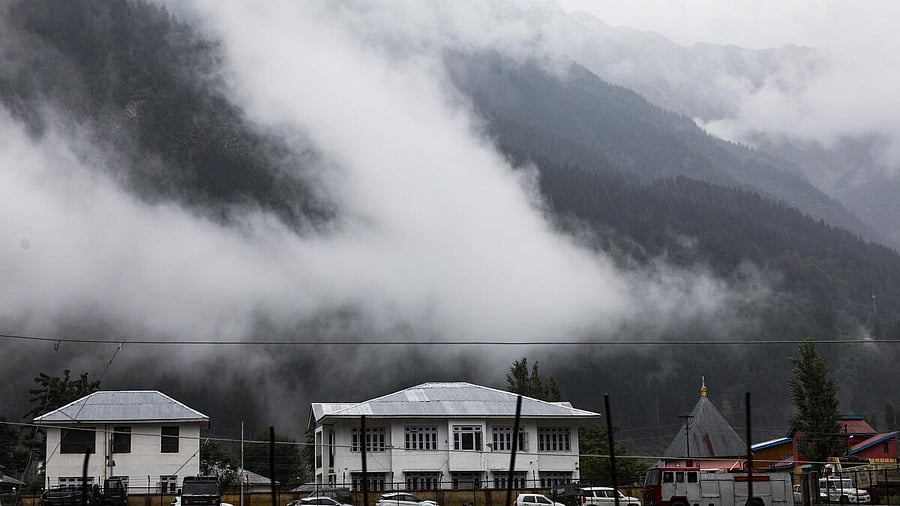
Vehicles pass beneath low hanging clouds at Chisoti village, in Kishtwar district, Jammu and Kashmir.
Credit: PTI Photo
Srinagar: The devastating cloudbursts in Kishtwar and Kathua districts last week, which left more than 70 people dead, have once again highlighted Jammu and Kashmir’s extreme vulnerability to such sudden, destructive downpours.
Experts say the Union Territory’s location in the western Himalayas makes it uniquely prone. Narrow gorges, steep gradients, and fragile mountain soil amplify the impact of high-intensity rainfall.
“J&K is highly susceptible to cloudbursts due to its topography and climate. The western Himalayas are marked by abrupt elevation changes that intensify convective activity,” said Dr. Suhaib A Bandh, Assistant Professor of Environmental Science at SP College.
He explained that the phenomenon occurs when moist monsoon winds from the plains collide with cooler Himalayan air, triggering localized but very heavy rainfall.
Adding another perspective, environmental researcher Dr. Mudasir Nazir said the Himalayan ranges themselves play a role in trapping clouds.
“High peaks often block clouds from passing. They get pushed back, stacking up against the slopes until the accumulated moisture becomes too heavy. At that point, it collapses, releasing intense rainfall in a short span,” he noted. He added that further studies are underway to validate this mechanism.
As cloudburst incidents become more frequent, experts underline the need for better preparedness. “Early warning tools exist, but local systems remain weak. Remote villages need basic communication, evacuation plans, and safe shelters,” said an environmental analyst.
Chief Minister Omar Abdullah, responding to the public concern, said the government was exploring the idea of setting up an expert panel to identify risk zones and recommend safeguards.
“We cannot prevent natural events like cloudbursts, but we can reduce their impact. I have asked officials to consider forming a team of experts to map vulnerable areas and suggest steps to protect lives,” Abdullah said.
NC insiders admit the proposal comes amid pressure on the government to take stronger measures. “We cannot allow this to become another discussion after the tragedy. What people expect now is real follow-up — proper mapping, regulation of unsafe construction, and serious disaster preparedness,” a senior party leader remarked.